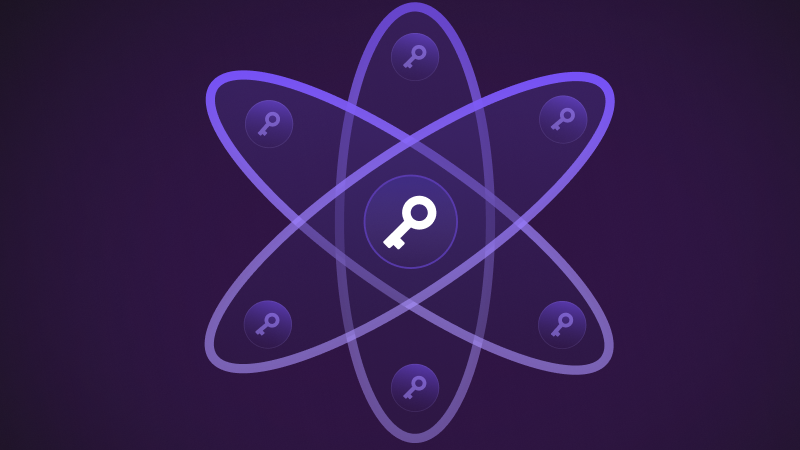The stakes for security have never been higher as organizations entrust more sensitive workloads to public and hybrid clouds. Between customer data, financial records, confidential IP and more, the risks of interception, data leakage, and eventual decryption have grown significantly.
And with quantum computing on the horizon, some of today’s best encryption methods won’t hold up in the near future.
This is where quantum key distribution (QKD) joins the conversation. While still early in its commercial journey, QKD is a fundamentally different way to secure data in transit using the laws of quantum mechanics, as opposed to the limits of classical computation.
In this blog, we’ll break down:
- What quantum key distribution is, and how it works
- The unique role of quantum keys in cloud security
- Real-world use cases and examples
- How QKD fits alongside post-quantum cryptography (PQC)
- What security teams can do now to prepare for the quantum era
Read on for a clearer sense of how quantum key distribution could reshape the future of secure communications and the steps you can take now to stay ahead.
What Makes Quantum Key Distribution Different
So, what is quantum key distribution? And why are people talking about it now?
Quantum Key Distribution is essentially a way to securely exchange encryption keys using the principles of quantum physics. Instead of relying on math problems that are “difficult” to solve, like RSA or ECC, QKD uses photons—particles of light—transmitted through a quantum channel (typically fiber optics). These photons are encoded in quantum states that collapse when observed, which means any attempt to intercept the key exchange leaves a detectable trace.
To put it plainly: with QKD, if someone tries to eavesdrop or steal private information, you'll know it.
It sounds complicated, but this kind of information-theoretic security is a big deal. It doesn’t just assume attackers don’t have the computing power to break the system; it makes it physically impossible to copy the key without altering it.
One of the most widely used QKD protocols is BB84, first proposed in the 1980s. While it’s taken decades for the tech to catch up, we’re finally seeing QKD pilots and real-world deployments across national defense, telecom, financial services, and research networks.
Why Quantum Keys Matter in the Cloud
In today’s encryption, key management can be a significant vulnerability. Particularly in the cloud, where data is constantly moving between regions, devices, and users, securely exchanging keys is essential and also increasingly difficult.
This is why quantum keys matter: By generating shared secret keys using quantum particles rather than algorithms, you can significantly reduce the risk of interception, even by hackers who will have quantum computers in the future.
Quantum keys are randomly generated and transmitted securely. Further, they’re never placed in long-term storage, making them ideal for high-trust communications.
In cloud environments, these keys could be used to encrypt sensitive workloads as they move between cloud regions in different geographic areas, edge nodes and centralized data centers, or federated cloud systems, such as multi-cloud or hybrid-cloud architectures.
While we still have time before full integration of QKD into public cloud platforms is mainstream, several infrastructure providers are actively experimenting. Examples include:
- Toshiba and BT ran a successful QKD trial across London, securing data center traffic using quantum channels [source].
- The European Union’s EuroQCI initiative is working to deploy a continent-wide quantum communication network [source].
- In the U.S., the Chicago Quantum Exchange is building a 124-mile QKD testbed to secure regional communications [source].
What’s exciting is these aren’t just experiments; they’re national-scale investments in a quantum-secure future.
What’s the Difference Between QKD and Post-Quantum Cryptography
So, where does QKD fit when it comes to post-quantum cryptography (PQC)? Aren’t they both trying to solve the same problem?
Yes and no.
While that may sound non-committal, PQC is more about designing new encryption algorithms that are resistant to quantum attacks but still based on conventional hardware and software. PQC is crucial because you can deploy it today with minimal disruptions to your existing infrastructure.
The National Institute of Standards and Technology (NIST) is in the final stages of standardizing a set of PQC algorithms that will replace vulnerable methods like RSA and ECC. [source]
QKD, on the other hand, is more of a complementary technology rather than a replacement. It doesn’t rely on mathematics but on quantum physics. While PQC provides broad compatibility, QKD provides tamper-evidence and provable secrecy.
Here’s a quick breakdown:
| Feature | Post-Quantum Crypto | BYOE |
|---|---|---|
| Based on | Math (lattices, codes, etc.) | Quantum physics |
| Hardware needed | No | Yes (Optical devices, detectors) |
| Interception detection | No | Yes |
| Scalable via internet | Yes | Limited (need quantum links) |
| Maturity | High (soon to be standardized) | Growing (still emerging) |
Rather than picking one over the other, most security experts are advocating for a hybrid model: deploying PQC broadly while layering in QKD for ultra-sensitive data and long-term confidentiality.
Where Quantum Key Distribution Is Gaining Traction Today
While QKD is still early in its lifespan, its real-world usability is becoming clearer. It’s a particularly good fit for industries that utilize high-value or long-lasting data where the risk of a “store now, decrypt later” attack is real.
A few areas where QKD makes the most sense include:
- Financial institutions: Protecting transactions between banks and settlement data between global offices.
- Defense agencies: Securing military communications and satellite links against interception.
- Healthcare networks: Shielding sensitive information such as patient records, genomic data, or clinical trials.
- Critical infrastructure: Power grids, transportation systems, and telecom providers are exploring QKD for control system protection.
In Japan, for example, NTT and Mitsubishi have been testing QKD to secure smart grid communications in an effort to ensure energy infrastructure is protected against advanced cyberattacks.
Despite the promise, QKD does have some limitations. First, it’s expensive to deploy. It also has distance limitations (about 100–200 km over fiber without repeaters) and often requires line-of-sight infrastructure or trusted nodes. But with recent advances in quantum satellites and integrated photonics, the scalability barrier is starting to shrink.
Getting Ready for a Quantum-Safe Future
Quantum computers aren’t mainstream yet, but the race is on. Any business that relies on the cloud to exchange critical data needs to start thinking beyond the encryption they’ve become accustomed to. At the end of the day, it’s time to take a deeper look at technologies such as quantum key distribution and post-quantum cryptography.
In a nutshell:
- QKD uses the laws of quantum mechanics to detect interception and protect key exchanges.
- Quantum keys offer superior security for cloud communication, especially where confidentiality is critical.
- QKD and PQC serve different but complementary purposes.
- Real-world deployments are already happening in telecom, finance, defense, and more.
Businesses don’t need to overhaul their security stack overnight, but winning organizations are mapping their quantum transition strategies now. Being proactive today could mean the difference between resilience and regret down the road.
For industries like manufacturing, the risks are especially high, making secure, quantum-ready solutions critical to long-term resilience.
Ready to learn more about quantum-resilient solutions?
Fortanix helps organizations embrace crypto-agility and prepare for emerging quantum threats. Our PQC solutions help security teams modernize key management, encrypt sensitive workloads, and secure their cloud-native environments.
Contact us today to request a demo or learn more about how we can support your quantum security journey.
Beyond post-quantum cryptography and crypto-agility, Fortanix also ensures flexibility in adopting emerging technologies like Quantum Key Distribution aka QKD. Our platform is vendor-agnostic, meaning it can seamlessly integrate with any Quantum Key Distribution provider to unify key management across diverse infrastructures.
This allows organizations to avoid vendor lock-in, maintain consistent security controls, and adopt the best-fit quantum solutions for their unique environments—whether in hybrid cloud, multi-cloud, or on-premises deployments.











